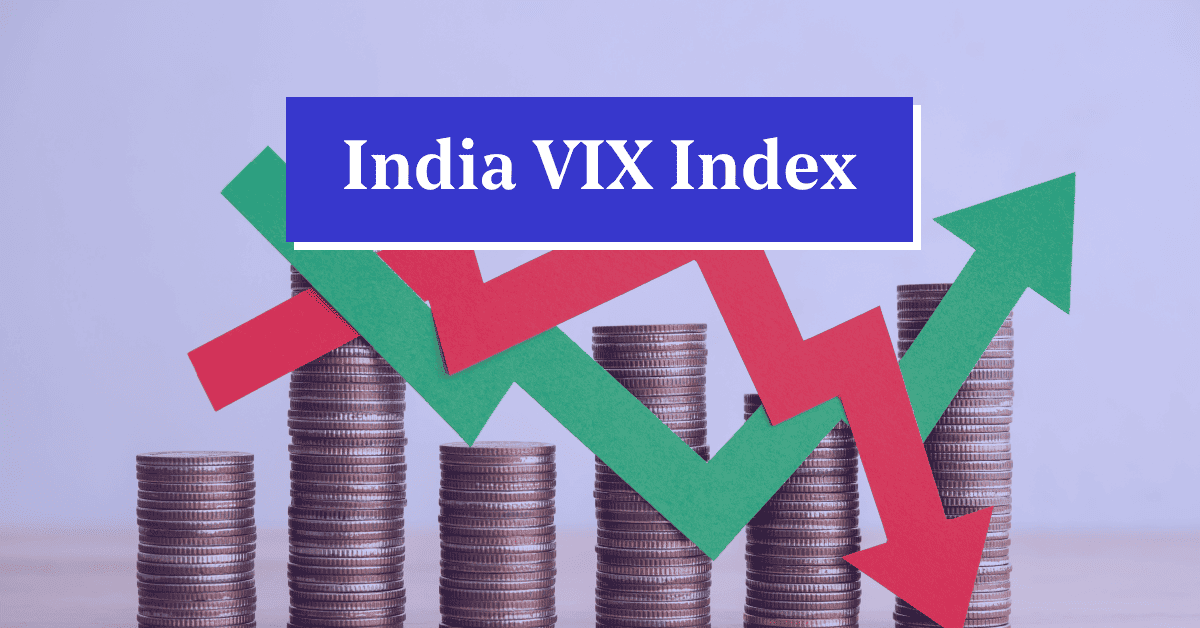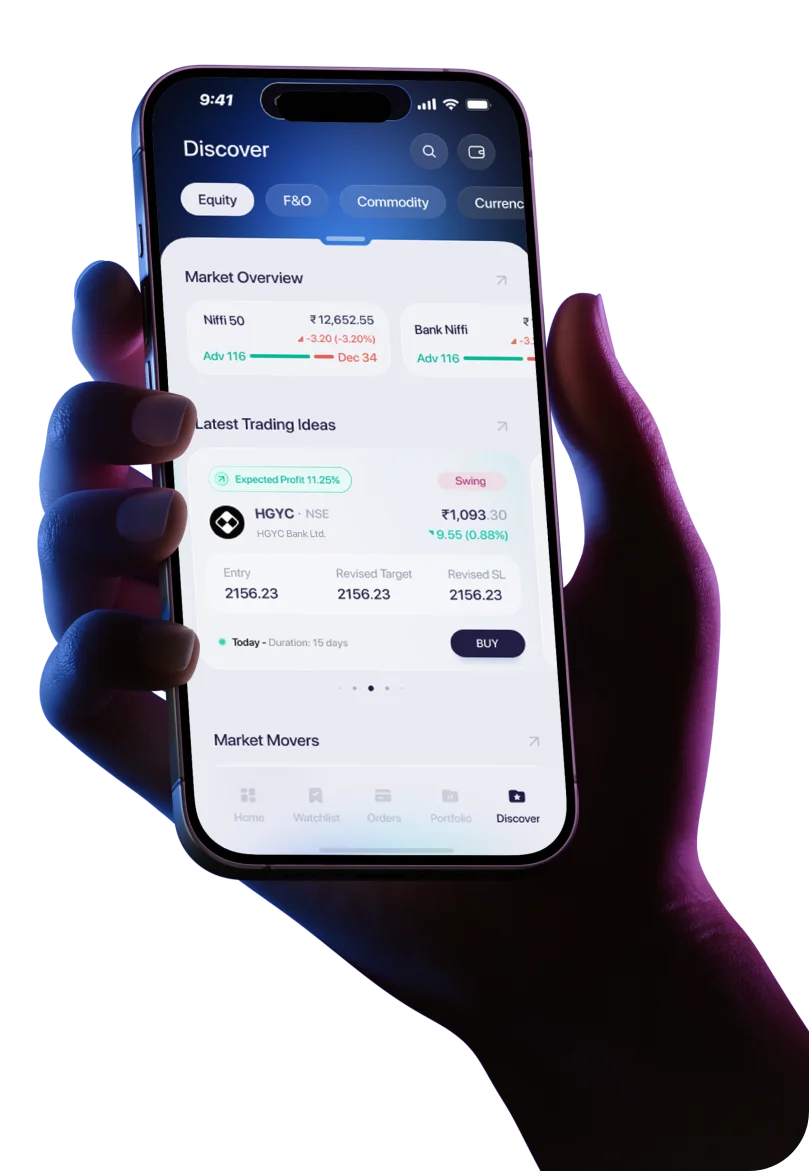Not many new investors and traders are aware of India VIX. While they may know how significant market volatility can be, this volatility measure is often ignored or unheard of. However, understanding and tracking this statistical measure makes it possible to assess market volatility more effectively.
So, if you, too, have not heard of the India VIX index and how it works, it is time to learn about this crucial market volatility indicator. In this article, we introduce you to the India VIX and why it matters to market participants who are tracking market volatility and investor sentiment.
What is India VIX?
India VIX, also known as the India Volatility Index, measures the volatility that the market expects in the next 30 days. Often referred to as the ‘fear gauge,’ it reflects how much traders expect the Nifty 50 to fluctuate soon. A higher India VIX value indicates higher anticipated volatility, while a lower value may indicate a more stable market outlook. This sums up what India VIX is. That said, it does not indicate the direction of movement — only the magnitude.
India VIX is derived from the order book of the Nifty 50 index options traded on the NSE. It uses a mathematical model (the Black-Scholes model) to compute the expected volatility. The calculator is based on the live bid-ask prices of out-of-the-money (OTM) put and call options.
Understanding the India VIX Index
To better understand the India VIX index, you must first know that it is modelled on the CBOE Volatility Index (VIX), which tracks volatility in the US markets. Introduced by the NSE in 2003, India VIX evaluates the volatility in the Nifty 50 index values in the next 30 days.
It does not account for past performance or current volatility. Instead, it represents the market's future expectations. This makes it a forward-looking indicator useful for traders, analysts, and institutional investors alike.
The indicator is calculated using the Black-Scholes option pricing model, explicitly focusing on Nifty 50 OTM call and put options. It captures the premium investors will pay to hedge their trades against expected market movements. When uncertainty or fear rises, the option prices increase because traders are willing to pay a higher premium. This pushes the VIX upward. Conversely, when the market is fairly stable, the value of VIX falls. This sums up the India VIX index, how it behaves, and what it means.
What Factors Are Considered in the India VIX Calculation?
While benchmark indices like the Nifty 50 and Sensex are based on different companies' market capitalisations and stock prices, this volatility measure is calculated differently. Instead, true to what the India VIX index is, it relies on the expected volatility in the options market. More specifically, the following factors are considered when calculating the India VIX value:
- Strike Price: This is the price at which the OTM options considered can be exercised.
- Market Price: This is the market value of the Nifty 50 index.
- Time to Expiry: This is the time left for the options considered to expire. This factor typically uses the minutes till expiration to allow for accurate calculations.
- Risk-Free Interest Rate: This is the hypothetical rate of return in a risk-free market. It is generally considered for 30 to 90 days.
- Volatility: This is the most crucial variable in the India VIX calculator. It measures market price fluctuations.
- Forward Index Level: This is the price at which the market expects the Nifty index to be when the options expire. It’s not the current NIFTY level — it’s the expected future level, inferred from option prices.
How is India VIX Calculated?
Now that you have seen what India VIX is and what factors influence its calculation, let us discuss the computation process in more detail. Here is a step-by-step guide to understand how the calculation works.
Step 1: Calculate Variance from Options
First, you calculate the market's expected volatility separately for the near-month and mid-month Nifty OTM option contracts. These results are converted into two different variance values to measure the expected movement in each category of options.
Step 2: Interpolate to Get a 30-Day Variance
Since India VIX is meant to reflect the volatility over a 30-day horizon, you must combine the two variance values obtained in step 1 using interpolation. This will give you a single variance value precisely 30 days before expiry.
Step 3: Convert the Variance to Volatility
In this step, you take the square root of the 30-day variance obtained in step 2 and convert that value into its standard deviation (by computing its square root). This will give you a more familiar measure of volatility.
Step 4: Express as a Volatility Index Value
Finally, multiply the standard deviation computed in step 3 by 100 to convert it into a more readable number. This final number is the India VIX, which represents the market’s expectation of volatility over the next 30 days. For example, a result of 16.15 means the market expects annualised volatility of 16.15 over the next 30 days.
This is the formula for computing the India VIX value as per the steps outlined above:
σ² = (2 / T) × Σ [ (ΔKᵢ / Kᵢ²) × eRT × Q(Kᵢ) ] − (1 / T) × [ (F / K₀) − 1 ]²
Here is what each symbol means in the above formula:
- σ² is the variance
- T is the time to expiration
- Kᵢ is the strike price of the ith option
- ΔKᵢ is the interval between the strike prices
- R is the risk-free interest rate
- Q(Kᵢ) is the average price of the call and put at strike Kᵢ (OTM option prices)
- F is the forward index level derived from option prices
- K₀ is the first strike price below the forward index level
Why is India VIX Important?
Having seen India VIX, you can better appreciate why it is important. Check out the key reasons this market indicator matters to investors and traders:
It Helps Assess Market Risk in Real Time
India VIX acts as a real-time risk measure for the Indian stock market. It tells investors how volatile or stable the market will be over the next month. If the index spikes, it indicates heightened risk and potential price swings. This helps investors reassess their exposure and prepare their portfolios for turbulent times.
It Reflects Market Sentiment and Investor Psychology
The India VIX directly correlates with investor emotions like fear and uncertainty. A rising VIX typically indicates growing anxiety among traders, often due to events like policy changes, global tensions or poor earnings forecasts. Conversely, a falling VIX suggests confidence and market stability.
It Supports Strategic Decision-Making in Portfolios
Investors can use the India VIX to make smarter decisions around asset allocation. For instance, some may shift to defensive sectors or reduce equity exposure when VIX is high. Conversely, a low VIX may prompt investors to take on more risk. It’s also useful for timing market entries and exits or deciding when to hedge positions.
It Aids in Hedging and Derivatives Strategies
India VIX is a critical input for traders using options and futures in planning their trade strategies. A spike in VIX generally leads to higher option premiums, making it more expensive to buy options but potentially more profitable to sell them. Understanding VIX-related trends can help options traders position themselves better in uncertain markets.
India VIX vs. NIFTY 50: Key Differences
Here is a comprehensive table comparing India VIX and NIFTY 50 and highlighting the key differences between the two:
Particulars | India VIX | Nifty 50 |
Definition | A volatility index that measures expected market fluctuations over the next 30 days | A benchmark equity index tracking the performance of 50 large-cap Indian companies |
Purpose | Indicates market sentiment and risk perception | Represents the overall performance of the Indian stock market |
Nature of the Index | Derived (implied volatility index) | Actual price-based index |
Based On | Prices of Nifty 50 index options (implied volatility) | Market capitalisation and performance of the 50 selected stocks |
Interpretation | Higher value means higher expected volatility, but it does not indicate direction | A rising value means a bullish market, and a falling value means a bearish market |
Investment Opportunities | Cannot invest directly; only used for analysis and derivatives strategies | Can invest in it via index funds, ETFs (like Nifty BeES), or direct equity investments |
Global Counterpart | Modelled on the CBOE Volatility Index (VIX) | Similar to indices like the S&P 500 or the Dow Jones Industrial Average |
Method of Calculation | The Black-Scholes model | The free-float market capitalisation method |
How Traders and Investors Use India VIX
Traders and investors closely track India VIX to stay ahead of market swings. It offers quick insights into expected volatility and risk levels and helps them fine-tune their strategies. Here’s how:
- By Assessing Market Sentiment: Participants can gauge fear and confidence before trading decisions.
- By Timing Market Entries: It becomes easier to enter or exit positions based on the expected volatility.
- By Pricing Options Strategically: Traders can use the VIX value to determine when options are overpriced or underpriced.
- By Managing Risk Exposure: It is also possible to adjust the portfolio risk during high and low volatility periods.
Conclusion
This should help you understand the India VIX index and how it works. Ultimately, it is a vital tool for understanding expected market volatility and general investor sentiment. It does not predict the price direction but can easily highlight potential fluctuations. So, if you are analysing risk, timing your trades,, or simply reading the market mood, India VIX offers valuable insights for each use case.




 Easy & quick
Easy & quick
Leave A Comment?